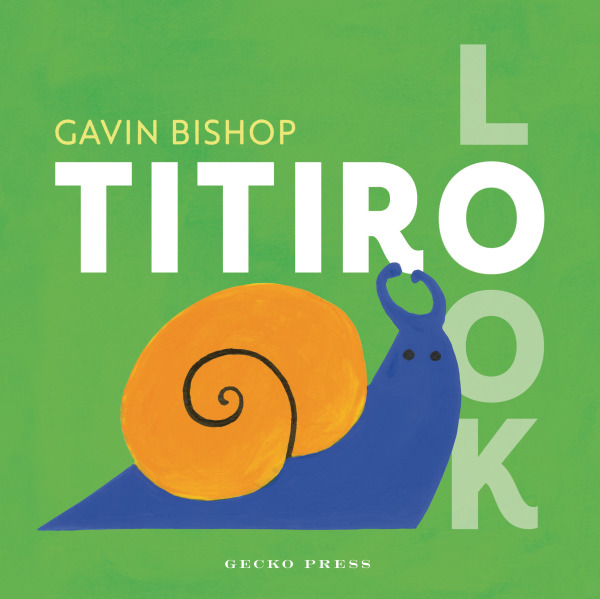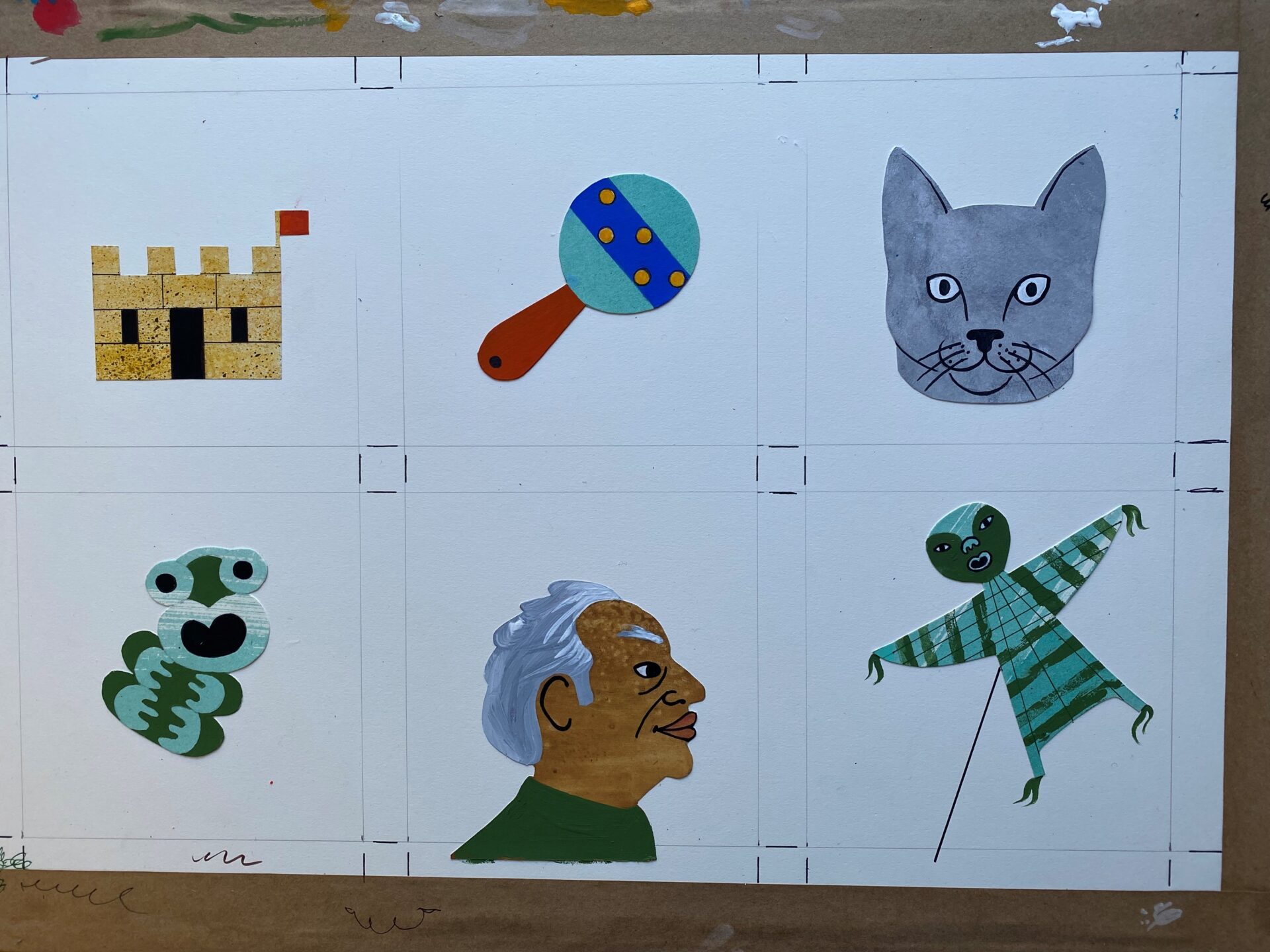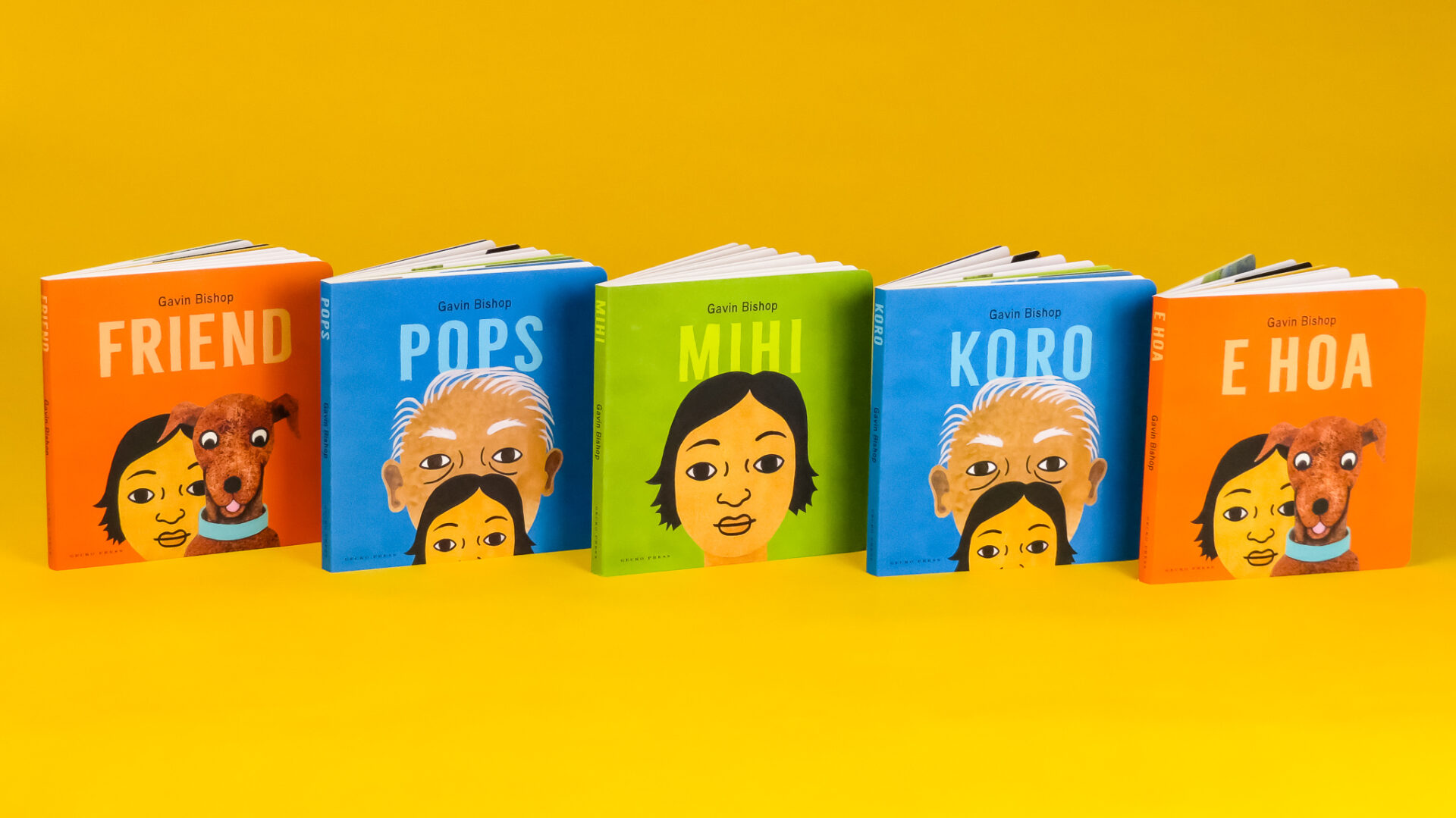

Gavin Bishop has created four board books for the very young that introduce first words and concepts through a lens of whānau and our place in the world. The direct gaze of child and adult faces draws the reader into each illustration, while single words spark conversation about objects, emotions, relationships and more.
The series began with Mihi and includes Koro and E Hoa (both also translated into English), the wordless leporello Look, and now a book of first words Titiro / I Look (also translated into Spanish for release in North America).
Combining new words with conversation about who we are and where we fit, these books are much more than words and pictures.
What is the creative spark for this series of board books?
These books continue an almost lifelong quest of mine to write and illustrate stories for New Zealand children that reflect their world and what they know of it.
The fact that these are books for babies is a challenge right from the start. The story has to be brief and the pictures uncomplicated. Babies like the action to start right away and they don’t want it to last too long. And once they have finished ‘reading’ a book they usually like to begin again, immediately. The book has to be physically robust, too. It will get lots of rides in a pram or on the back of a trike.
Where do these faces come from? Are they people you know or are they made up?
My immediate answer is to say that these faces are made up, but probably many come from a memory bank in my head that has been built up and added to over many years of meeting people.
My first aim is to make the faces in my books for young children friendly and approachable. They are there to invite young readers into the book and let them explore all of the pictures and words with confidence and enjoyment.
These books are seemingly simple— are they easy to create?
When everything is stripped away, as it is in these ‘baby’ books, there is nowhere to hide. You can’t fudge anything or do something that you are not entirely pleased with and secretly hope no one will notice. I am very grateful, too, for the input from the editing and design teams. Just when I think I’ve nailed it, they come along and find something else that could be taken away to simplify and strengthen the images further.
In their own way, these little books are as challenging as the much bigger books I’ve been doing in recent years. They don’t take as long, because they don’t have many pages and the concepts are simpler, but for what they are, they are really demanding. The stories are rewritten over and over, and I often do each illustration several times.
What techniques do you use to create the artwork?
I use collage and felt pen for details. I start by painting several sheets of paper with the colours I want to use for faces, hands, etc. and then cut out the shapes of my characters and glue them onto stretched watercolour paper. I suppose it would be simpler to use digital images on a computer, but I like working with my hands—it helps me to think.
Titiro / Look is a bilingual book to ask questions, point and talk, for adult reader and child to learn and explore together—or to enjoy quietly alone.




